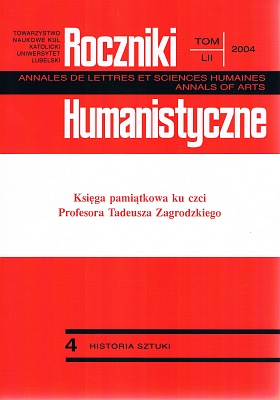Looking for native art. A discussion on the reception of the Ruthenian church painting of the end of the 19th century and the beginning of the 20th century in Eastern Galicia
Abstract
The article shows research for the sources of the Ruthenian art at the break of the 19th century that became the basis for formation of the Ukrainian art. To form one's own art it was necessary to use the models from the past epochs, i.e. to refer to history. Native art needed not only contents, but also formal iconographic types and motifs that could be followed by Ukrainian painters. Historiographic reception of Ruthenian art, and first of all reaching for the art of the 15th-17th centuries, provided responses to those needs and shaped the vision of native painting with national values, based on religious tradition.
In the discussion we are dealing, when we take under consideration literature in two languages, Polish and Ukrainian, with works written on “two different sides” with respect to national interests of the authors who fought for ideas confirming their national identity in the press, in reviews of exhibitions and in monographic works, in which thinking about particular works often led to very interesting general considerations of religious and national art; with the texts written by native art lovers expressing their admiration of its originality, as well as by works written by professional researchers, like M. Sokołowski or W. Podlacha. The Polish side begins this intensive discussion in connection with staging the Archeological Exhibition in 1885. Then the Ukrainian side, especially after the Archeological-Bibliographical Exhibition put on by the Stauropigial Institute in Lvov in 1888, speaks more frequently about this issue and looks for an explanation that would be proper for its own culture.
The discussion resulted in distinguishing the native old-Ruthenian art that formed the foundations for the national art. It also showed that the Ruthenian painting had overcome the Byzantine canon, and under the influence of the West it started to develop in an original way. This was appreciated and it discovered possibilities for an artistic creative individuality, and using the achievements of the icon and the Halicz painting it also paved the way towards a revival of the Ukrainian art.
Copyright (c) 2004 Roczniki Humanistyczne

This work is licensed under a Creative Commons Attribution-NonCommercial-NoDerivatives 4.0 International License.





